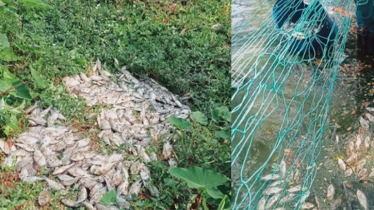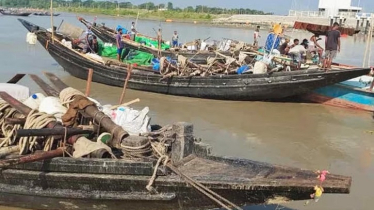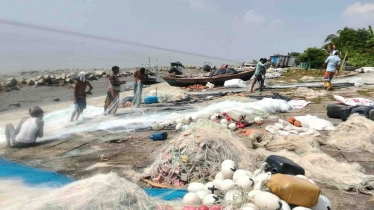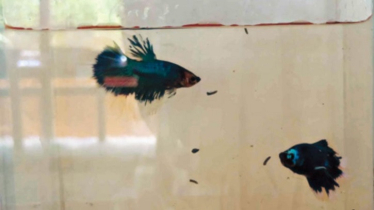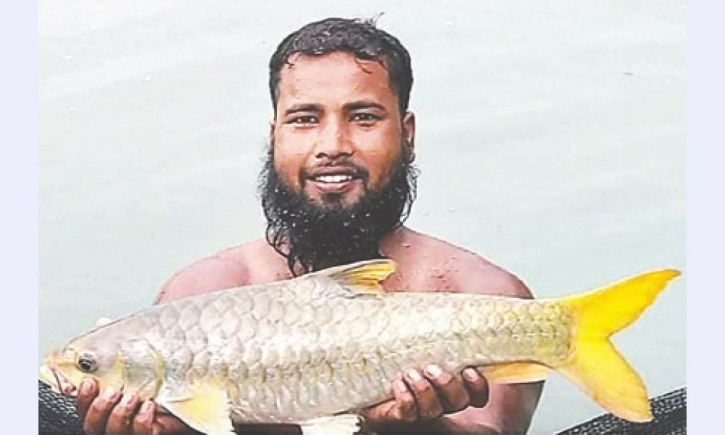
Journalist Faijul Siddikii of a private television channel first noticed an unusual fish resembling grass carp and Mahashol in a local market in Bandarban in 2021 while reporting on news. Upon returning to Dhaka, he informed researchers at the Bangladesh Fisheries Research Institute (BFRI), prompting a detailed investigation.
BFRI scientists eventually located the fish in the Sangu River in Thanchi Upazila, Bandarban. With the assistance of local fishermen, samples were collected from Andharmanik, Boro Modok, and Ligri areas, where the river is deep and the riverbed is rocky. In 2022, the specimens were brought to the institute for detailed laboratory examination, including external morphology and scale patterns.
DNA barcoding compared the samples with reference genomes, confirming the fish as a new species of Mahashol, scientifically named Tor barakae. Its native habitat is the Barak River in India. Although the scales resemble other Mahashol species, its fin coloration is unique. Bangladesh previously hosted two Mahashol species: Tor tor and Tor putitora. The discovery of Tor barakae brings the total number of Mahashol species in the country to three.
Mahashol is a prized freshwater fish, renowned for its taste, beauty, and high market value. It inhabits clear, rocky-bottomed rivers and lakes, feeding primarily on periphyton. Historically, Mahashol was found in Netrokona, Sylhet, and Dinajpur, but now Tor tor appears only sporadically in rivers such as the Kangsha and Someshwari in Netrokona. Habitat degradation due to water drying and illegal sand extraction has made its population nearly extinct. Some locals cultivate juvenile Mahashol in ponds for two to three years before selling the adult fish at premium prices.
BFRI pioneered the breeding and cultivation of Tor putitora from Nepal in 2010. Field-level farming is limited, with better growth observed in tea garden lakes and coastal reservoirs. Supplementary feeds include rice bran, crushed shrimp, and small insects. Mahashol spawns in winter, typically from November to January, with egg production ranging from 6,000 to 10,000 per kilogram of body weight, lower than other carp species. BFRI continues research on breeding techniques for Tor barakae in Bangladesh.
Mahashol is also celebrated as a sports fish, readily caught with fishing rods. It belongs to the Cyprinidae family and is found across countries including India, Pakistan, Myanmar, Sri Lanka, Afghanistan, and Malaysia, with significant variation in species characteristics. Globally, the largest Mahashol recorded weighs 54 kg, while Tor tor in Bangladesh grows up to 16–17 kg. The fish has a well-structured body, comparatively small head and mouth, and barbels around the mouth. Tor putitora attains relatively larger sizes.
Recently, grass carp and black carp have been misrepresented in markets as Mahashol, sold at BDT 800–1,000 per kilogram. Genuine Mahashol has golden body coloration that darkens with size and large scales with yellowish or reddish fins, distinct from other species.
This discovery not only enriches Bangladesh’s freshwater biodiversity but also opens avenues for sustainable cultivation and conservation of an increasingly rare and valuable fish species.
Dr Yahia Mahmud, Fisheries Specialist, Mail: yahiamahmud@yahoo.com


